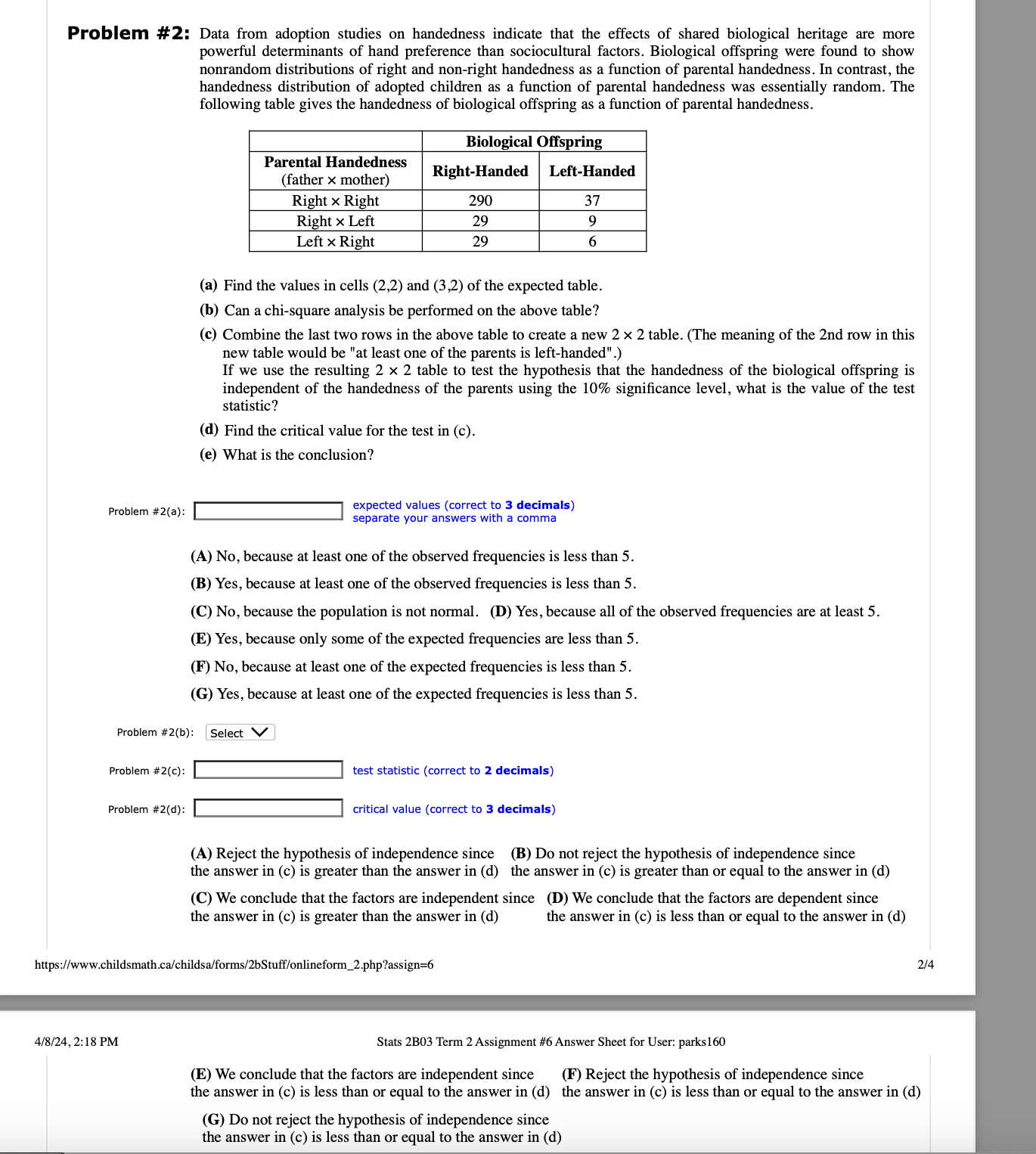Answered step by step
Verified Expert Solution
Question
1 Approved Answer
Problem #2: Data from adoption studies on handedness indicate that the effects of shared biological heritage are more powerful determinants of hand preference than

Problem #2: Data from adoption studies on handedness indicate that the effects of shared biological heritage are more powerful determinants of hand preference than sociocultural factors. Biological offspring were found to show nonrandom distributions of right and non-right handedness as a function of parental handedness. In contrast, the handedness distribution of adopted children as a function of parental handedness was essentially random. The following table gives the handedness of biological offspring as a function of parental handedness. Biological Offspring Parental Handedness (father mother) Right-Handed Left-Handed Right Right 290 37 Right x Left 29 9 Left x Right 29 6 (a) Find the values in cells (2,2) and (3,2) of the expected table. (b) Can a chi-square analysis be performed on the above table? (c) Combine the last two rows in the above table to create a new 2 2 table. (The meaning of the 2nd row in this new table would be "at least one of the parents is left-handed".) If we use the resulting 2 2 table to test the hypothesis that the handedness of the biological offspring is independent of the handedness of the parents using the 10% significance level, what is the value of the test statistic? (d) Find the critical value for the test in (c). (e) What is the conclusion? Problem #2(a): expected values (correct to 3 decimals) separate your answers with a comma (A) No, because at least one of the observed frequencies is less than 5. (B) Yes, because at least one of the observed frequencies is less than 5. (C) No, because the population is not normal. (D) Yes, because all of the observed frequencies are at least 5. (E) Yes, because only some of the expected frequencies are less than 5. (F) No, because at least one of the expected frequencies is less than 5. (G) Yes, because at least one of the expected frequencies is less than 5. Problem #2(b): Select Problem #2(c): Problem #2(d): test statistic (correct to 2 decimals) critical value (correct to 3 decimals) (B) Do not reject the hypothesis of independence since the answer in (c) is greater than or equal to the answer in (d) (D) We conclude that the factors are dependent since the answer in (c) is less than or equal to the answer in (d) (A) Reject the hypothesis of independence since the answer in (c) is greater than the answer in (d) (C) We conclude that the factors are independent since the answer in (c) is greater than the answer in (d) https://www.childsmath.ca/childsa/forms/2bStuff/onlineform_2.php?assign=6 4/8/24, 2:18 PM Stats 2B03 Term 2 Assignment #6 Answer Sheet for User: parks160 (E) We conclude that the factors are independent since the answer in (c) is less than or equal to the answer in (d) (G) Do not reject the hypothesis of independence since the answer in (c) is less than or equal to the answer in (d) (F) Reject the hypothesis of independence since the answer in (c) is less than or equal to the answer in (d) 2/4
Step by Step Solution
There are 3 Steps involved in it
Step: 1

Get Instant Access to Expert-Tailored Solutions
See step-by-step solutions with expert insights and AI powered tools for academic success
Step: 2

Step: 3

Ace Your Homework with AI
Get the answers you need in no time with our AI-driven, step-by-step assistance
Get Started


